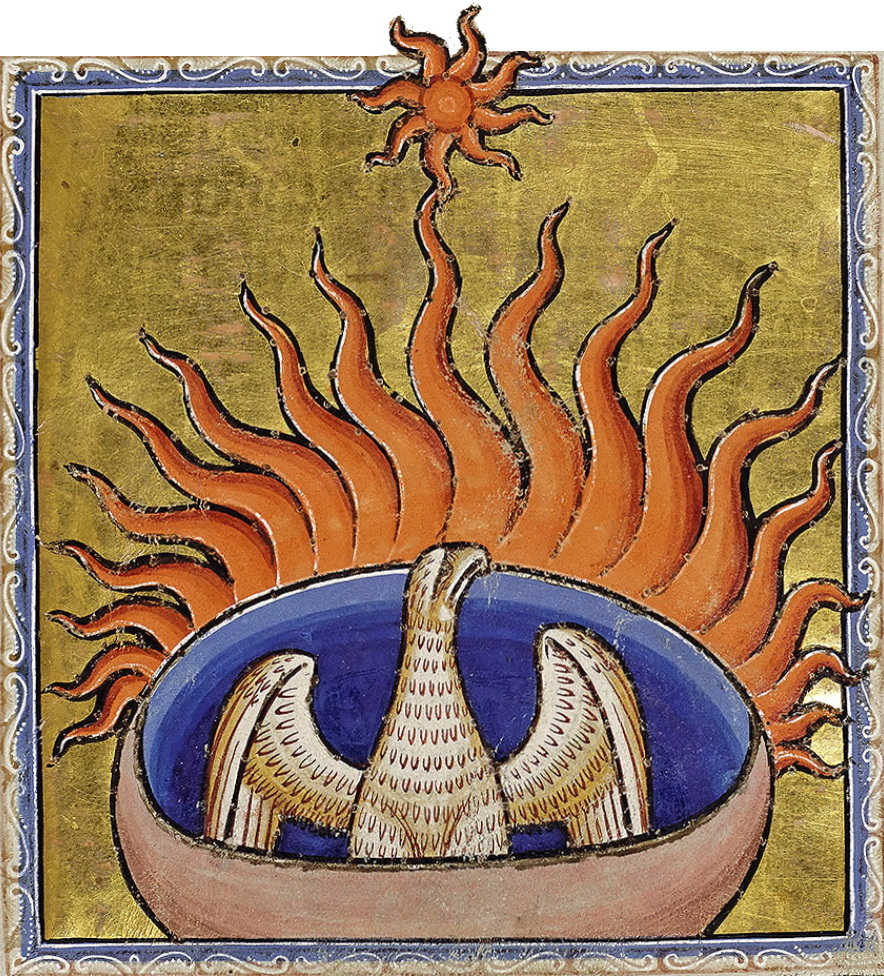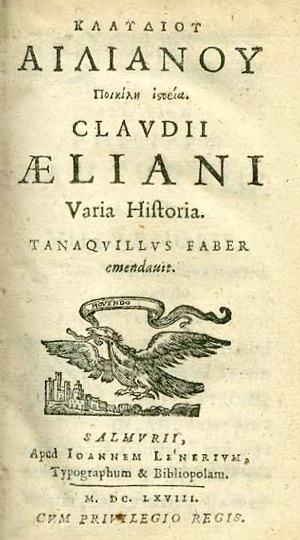|
Bestiary
A bestiary (from ''bestiarum vocabulum'') is a compendium of beasts. Originating in the ancient world, bestiaries were made popular in the Middle Ages in illustrated volumes that described various animals and even rocks. The natural history and illustration of each beast was usually accompanied by a moral lesson. This reflected the belief that the world itself was the Word of God and that every living thing had its own special meaning. For example, the pelican, which was believed to tear open its breast to bring its young to life with its own blood, was a living representation of Jesus. Thus the bestiary is also a reference to the symbolic language of animals in Western Christian art and literature. History The bestiary — the medieval book of beasts — was among the most popular illuminated texts in northern Europe during the Middle Ages (about 500–1500). Medieval Christians understood every element of the world as a manifestation of God, and bestiaries largely focus ... [...More Info...] [...Related Items...] OR: [Wikipedia] [Google] [Baidu] |
Aberdeen Bestiary
The ''Aberdeen Bestiary'' (Aberdeen University Library, Univ Lib. MS 24) is a 12th-century England, English illuminated manuscript bestiary that was first listed in 1542 in the inventory of the Old Royal Library at the Palace of Westminster. Due to similarities, it is often considered to be the "sister" manuscript of the Ashmole Bestiary. The connection between the ancient Greek didactic text ''Physiologus'' and similar bestiary manuscripts is also often noted. Information about the manuscript's origins and patrons are circumstantial, although the manuscript most likely originated from the 13th century and was owned by a wealthy ecclesiastical patron from north or south England. Currently, the Aberdeen Bestiary resides in the Aberdeen University Library in Scotland. History The Aberdeen Bestiary and the Ashmole Bestiary are considered by Xenia Muratova, a professor of art history, to be "the work of different artists belonging to the same artistic milieu." Due to their "striki ... [...More Info...] [...Related Items...] OR: [Wikipedia] [Google] [Baidu] |
Physiologus
The ''Physiologus'' () is a didactic Christian text written or compiled in Greek by an unknown author, in Alexandria; its composition has been traditionally dated to the 2nd century AD by readers who saw parallels with writings of Clement of Alexandria, who is asserted to have known the text, though Alan Scott has made a case for a date at the end of the 3rd or in the 4th century. The ''Physiologus'' consists of descriptions of animals, birds, and fantastic creatures, sometimes stones and plants, provided with moral content. Each animal is described, and an anecdote follows, from which the moral and symbolic qualities of the animal are derived. Manuscripts are often, but not always, given illustrations, often lavish. The book was translated into Armenian in 5th century, into Latin by the early 6th century or possibly even by the mid-4th century and into Ethiopic and Syriac, then into many European and Middle-Eastern languages, and many illuminated manuscript copies such as ... [...More Info...] [...Related Items...] OR: [Wikipedia] [Google] [Baidu] |
Etymologiae
''Etymologiae'' (Latin for "The Etymologies"), also known as the ''Origines'' ("Origins") and usually abbreviated ''Orig.'', is an etymological encyclopedia compiled by Isidore of Seville (c. 560–636) towards the end of his life. Isidore was encouraged to write the book by his friend Braulio, Bishop of Saragossa. ''The Etymologies'' summarized and organized a wealth of knowledge from hundreds of classical sources; three of its books are derived largely from Pliny the Elder's '' Natural History''. Isidore acknowledges Pliny, but not his other principal sources, namely Cassiodorus, Servius and Solinus. The work contains whatever Isidore, an influential Christian bishop, thought worth keeping. ''Etymologiae'' covers an encyclopedic range of topics. Etymology, the origins of words, is prominent, but the work covers among other things: grammar, rhetoric, mathematics, geometry, music, astronomy, medicine, law, the Roman Catholic Church and heretical sects, pagan philosophers, l ... [...More Info...] [...Related Items...] OR: [Wikipedia] [Google] [Baidu] |
Pelican
Pelicans (genus ''Pelecanus'') are a genus of large water birds that make up the family Pelecanidae. They are characterized by a long beak and a large throat pouch used for catching prey and draining water from the scooped-up contents before swallowing. They have predominantly pale plumage, except for the brown and Peruvian pelicans. The bills, pouches, and bare facial skin of all pelicans become brightly coloured before the breeding season. The eight living pelican species have a patchy global distribution, ranging latitudinally from the tropics to the temperate zone, though they are absent from interior South America and from polar regions and the open ocean. Long thought to be related to frigatebirds, cormorants, tropicbirds, and gannets and boobies, pelicans instead are now known to be most closely related to the shoebill and hamerkop, and are placed in the order Pelecaniformes. Ibises, spoonbills, herons, and bitterns have been classified in the same order. Fo ... [...More Info...] [...Related Items...] OR: [Wikipedia] [Google] [Baidu] |
Symbolic Language (art)
In art, symbolic language refers to the use of characters or images to represent concepts. Symbolic language in art uses imagery to communicate meaning by displaying an accessible concept, the ''signifier'', to represent a signified ''concept''. Symbolic language in art may be used figuratively, to reference ideas and "convey concepts in terms of images", as when images and positioning of objects such as flowers or animals are used to signify cultural concepts. Symbolic language in art may be used more literally, as in floriography, where arrangements of flowers are decoded with the help of special dictionaries, enabling communication of secret, unspoken information as a form of cryptography. Similarly, in religious iconography, symbolic languages may be developed to communicate between believers in a hostile environment, with progressive teachings providing increasing access to hidden meanings in the images. See also *Icon * Ineffability *Petroglyph *Saint symbolism *Semi ... [...More Info...] [...Related Items...] OR: [Wikipedia] [Google] [Baidu] |
Isidore Of Seville
Isidore of Seville ( la, Isidorus Hispalensis; c. 560 – 4 April 636) was a Spanish scholar, theologian, and archbishop of Seville. He is widely regarded, in the words of 19th-century historian Montalembert, as "the last scholar of the ancient world". At a time of disintegration of classical culture, aristocratic violence and widespread illiteracy, Isidore was involved in the conversion of the Arian Visigothic kings to Catholicism, both assisting his brother Leander of Seville and continuing after his brother's death. He was influential in the inner circle of Sisebut, Visigothic king of Hispania. Like Leander, he played a prominent role in the Councils of Toledo and Seville. His fame after his death was based on his '' Etymologiae'', an etymological encyclopedia that assembled extracts of many books from classical antiquity that would have otherwise been lost. This work also helped standardize the use of the period (full stop), comma, and colon. Since the early ... [...More Info...] [...Related Items...] OR: [Wikipedia] [Google] [Baidu] |
Gaius Julius Solinus
Gaius Julius Solinus was a Latin grammarian, geographer, and compiler who probably flourished in the early 3rd century AD. Historical scholar Theodor Mommsen dates him to the middle of the 3rd century. Solinus was the author of ''De mirabilibus mundi'' ("The wonders of the world") which circulated both under the title ''Collectanea rerum memorabilium'' ("Collection of Curiosities"), and ''Polyhistor'', though the latter title was favoured by the author himself. The work is indeed a description of curiosities in a chorographic framework. Adventus, to whom it is dedicated, is identified with Oclatinius Adventus, Roman consul in AD 218. It contains a short description of the ancient world, with remarks on historical, social, religious, and natural history questions. The greater part is taken from Pliny's ''Natural History'' and the geography of Pomponius Mela. According to Mommsen, Solinus also relied upon a chronicle (possibly by Cornelius Bocchus) and a ''Chorographia pliniana'' ... [...More Info...] [...Related Items...] OR: [Wikipedia] [Google] [Baidu] |
Claudius Aelianus
Claudius Aelianus ( grc, Κλαύδιος Αἰλιανός, Greek transliteration ''Kláudios Ailianós''; c. 175c. 235 AD), commonly Aelian (), born at Praeneste, was a Roman author and teacher of rhetoric who flourished under Septimius Severus and probably outlived Elagabalus, who died in 222. He spoke Greek so fluently that he was called "honey-tongued" ( ); Roman-born, he preferred Greek authors, and wrote in a slightly archaizing Greek himself. This cites: * ''Editio princeps'' of complete works by Gesner, 1556; Hercher, 1864-1866. * English translation of the ''Various History'' only by Fleming, 1576, and Stanley, 1665 * Translation of the ''Letters'' by Quillard (French), 1895 His two chief works are valuable for the numerous quotations from the works of earlier authors, which are otherwise lost, and for the surprising lore, which offers unexpected glimpses into the Greco-Roman world-view. It is also the only Greco-Roman work to mention Gilgamesh. ''De Natura Animal ... [...More Info...] [...Related Items...] OR: [Wikipedia] [Google] [Baidu] |
Saint Ambrose
Ambrose of Milan ( la, Aurelius Ambrosius; ), venerated as Saint Ambrose, ; lmo, Sant Ambroeus . was a theologian and statesman who served as Bishop of Milan from 374 to 397. He expressed himself prominently as a public figure, fiercely promoting the Christian faith against Arianism and paganism. He left a substantial collection of writings, of which the best known include the ethical commentary ''De officiis ministrorum'' (377–391), and the exegetical (386–390). His preachings, his actions and his literary works, in addition to his innovative musical hymnography, made him one of the most influential ecclesiastical figures of the 4th century. Ambrose was serving as the Roman governor of Aemilia- Liguria in Milan when he was unexpectedly made Bishop of Milan in 374 by popular acclamation. As bishop, he took a firm position against Arianism and attempted to mediate the conflict between the emperors Theodosius I and Magnus Maximus. Tradition credits Ambrose with develop ... [...More Info...] [...Related Items...] OR: [Wikipedia] [Google] [Baidu] |
Herodotus
Herodotus ( ; grc, , }; BC) was an ancient Greek historian and geographer from the Greek city of Halicarnassus, part of the Persian Empire (now Bodrum, Turkey) and a later citizen of Thurii in modern Calabria (Italy). He is known for having written the ''Histories'' – a detailed account of the Greco-Persian Wars. Herodotus was the first writer to perform systematic investigation of historical events. He is referred to as " The Father of History", a title conferred on him by the ancient Roman orator Cicero. The ''Histories'' primarily cover the lives of prominent kings and famous battles such as Marathon, Thermopylae, Artemisium, Salamis, Plataea, and Mycale. His work deviates from the main topics to provide a cultural, ethnographical, geographical, and historiographical background that forms an essential part of the narrative and provides readers with a wellspring of additional information. Herodotus has been criticized for his inclusion of "legends ... [...More Info...] [...Related Items...] OR: [Wikipedia] [Google] [Baidu] |
Septuagint
The Greek Old Testament, or Septuagint (, ; from the la, septuaginta, lit=seventy; often abbreviated ''70''; in Roman numerals, LXX), is the earliest extant Greek translation of books from the Hebrew Bible. It includes several books beyond those contained in the Masoretic text of the Hebrew Bible as canonically used in the tradition of mainstream Rabbinical Judaism. The additional books were composed in Greek, Hebrew, or Aramaic, but in most cases, only the Greek version has survived to the present. It is the oldest and most important complete translation of the Hebrew Bible made by the Jews. Some targums translating or paraphrasing the Bible into Aramaic were also made around the same time. The first five books of the Hebrew Bible, known as the Torah or the Pentateuch, were translated in the mid-3rd century BCE. The remaining translations are presumably from the 2nd century BCE. The full title ( grc , Ἡ μετάφρασις τῶν Ἑβδομήκοντα, , The Tra ... [...More Info...] [...Related Items...] OR: [Wikipedia] [Google] [Baidu] |







.jpg)